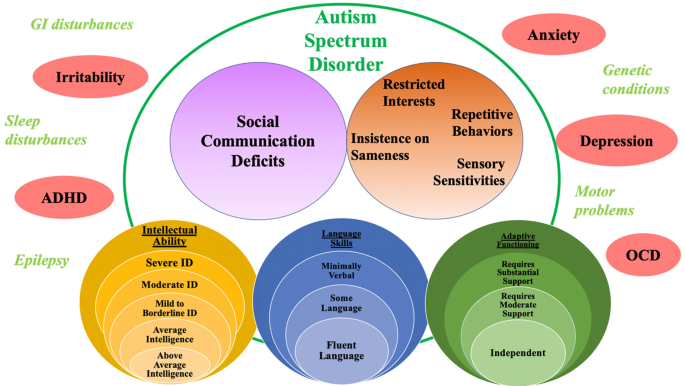

While this change has gotten a lot of media attention, the end result is likely not to be significant to people who are diagnosed with an autism spectrum disorder.

The symptoms of some patients diagnosed with DSM-IV pervasive developmental disorder not otherwise specified may meet the DSM-5 criteria for social communication disorder. Because social communication deficits are one component of autism spectrum disorder (ASD), it is important to note that social (pragmatic) communication disorder cannot be diagnosed in the presence of restricted repetitive behaviors, interests, and activities (the other component of ASD). The DSM-5 communication disorders include language disorder (which combines DSM-IV expressive and mixed receptive-expressive language disorders), speech sound disorder (a new name for phonological disorder), and childhood-onset fluency disorder (a new name for stuttering).Īlso included is social (pragmatic) communication disorder, a new condition for persistent difficulties in the social uses of verbal and nonverbal communication. Despite the name change, the deficits in cognitive capacity beginning in the developmental period, with the accompanying diagnostic criteria, are considered to constitute a mental disorder. Moreover, a federal statue in the United States (Public Law 111-256, Rosas Law) replaces the term mental retardation with intellectual disability. Why was the terminology of mental retardation changed? “Intellectual disability is the term that has come into common use over the past two decades among medical, educational, and other professionals, and by the lay public and advocacy groups. Severity is determined by adaptive functioning rather than IQ score.” Hello “intellectual disability.”Īccording to the APA, “diagnostic criteria for intellectual disability (intellectual developmental disorder) emphasize the need for an assessment of both cognitive capacity (IQ) and adaptive functioning. of Psychiatry (정신과학교실) > 1.Intellectual Disability (Intellectual Developmental Disorder)īye bye “mental retardation,” a now politically-incorrect term out of vogue for over a decade. PDD, ASD or SCD extant diagnostic criteria identify a large, clinically meaningful group of individuals and families who require evidence-based services. All remaining children (2%) had other psychopathology, principally attention-deficit/hyperactivity disorder and anxiety disorder.ĬONCLUSION: Our findings suggest that most individuals with a prior DSM-IV PDD meet DSM-5 diagnostic criteria for ASD and SCD. Most children with autistic disorder (99%), Asperger disorder (92%), and PDD-NOS (63%) met DSM-5 ASD criteria, whereas 1%, 8%, and 32%, respectively, met SCD criteria.

Combined DSM-5 ASD and SCD prevalence was virtually the same as DSM-IV PDD prevalence (2.64%). RESULTS: DSM-5 ASD estimated prevalence was 2.20% (95% confidence interval = 1.77-3.64). Best-estimate clinical diagnoses were made using DSM-IV PDD and DSM-5 ASD and SCD criteria. Parents of screen-positive children were offered comprehensive assessments using standardized diagnostic procedures, including the Autism Diagnostic Interview-Revised and Autism Diagnostic Observation Schedule. We used the Autism Spectrum Screening Questionnaire for systematic, multi-informant screening. METHOD: The target population was all children from 7 to 12 years of age in a South Korean community (N = 55,266), those in regular and special education schools, and a disability registry. We also describe individuals previously diagnosed with DSM-IV PDD when diagnoses change with DSM-5 criteria. Using our published, total-population Korean prevalence data, we compute DSM-5 ASD and social communication disorder (SCD) prevalence and compare them with DSM-IV pervasive developmental disorder (PDD) prevalence estimates.
Dsm 5 pervasive developmental disorder manual#
Leventhal Citation JOURNAL OF THE AMERICAN ACADEMY OF CHILD AND ADOLESCENT PSYCHIATRY, Vol.53(5) : 500-508, 2014 Journal Title JOURNAL OF THE AMERICAN ACADEMY OF CHILD AND ADOLESCENT PSYCHIATRY ISSN 0890-8567 Issue Date 2014 MeSH Child Child Development Disorders, Pervasive/diagnosis* Child Development Disorders, Pervasive/epidemiology* Child Development Disorders, Pervasive/psychology Cross-Sectional Studies Diagnosis, Differential Diagnostic and Statistical Manual of Mental Disorders* Female Humans Male Republic of Korea Surveys and Questionnaires Keywords ASD DSM-5 DSM-IV SCD prevalence Abstract OBJECTIVE: Changes in autism diagnostic criteria found in DSM-5 may affect autism spectrum disorder (ASD) prevalence, research findings, diagnostic processes, and eligibility for clinical and other services. Authors Young Shin Kim Eric Fombonne Yun-Joo Koh Soo-Jeong Kim Keun-Ah Cheon Bennett L.


 0 kommentar(er)
0 kommentar(er)
